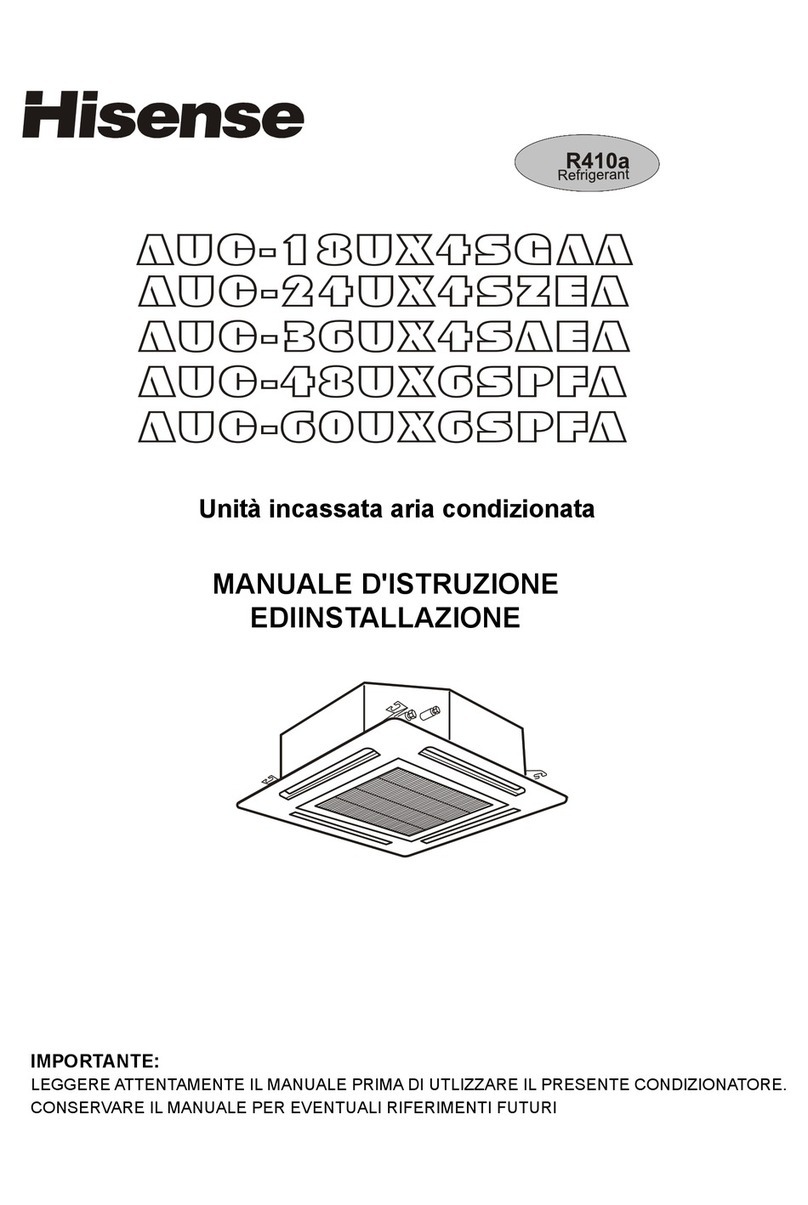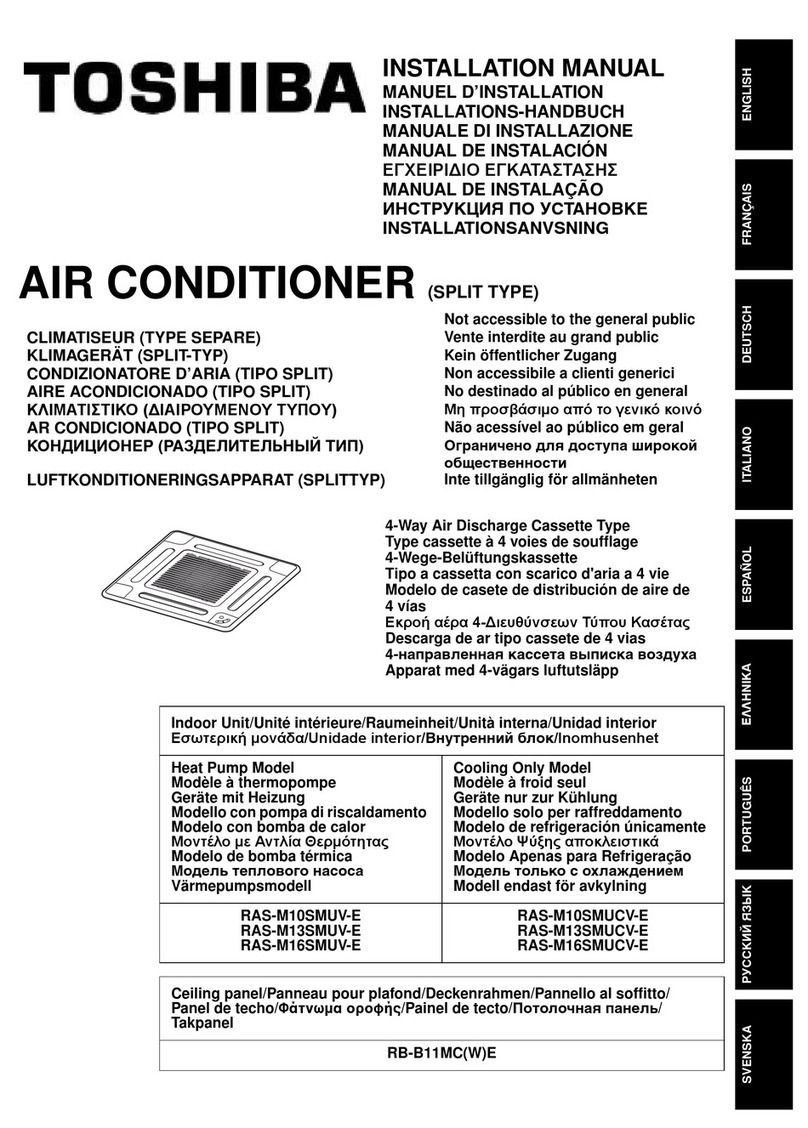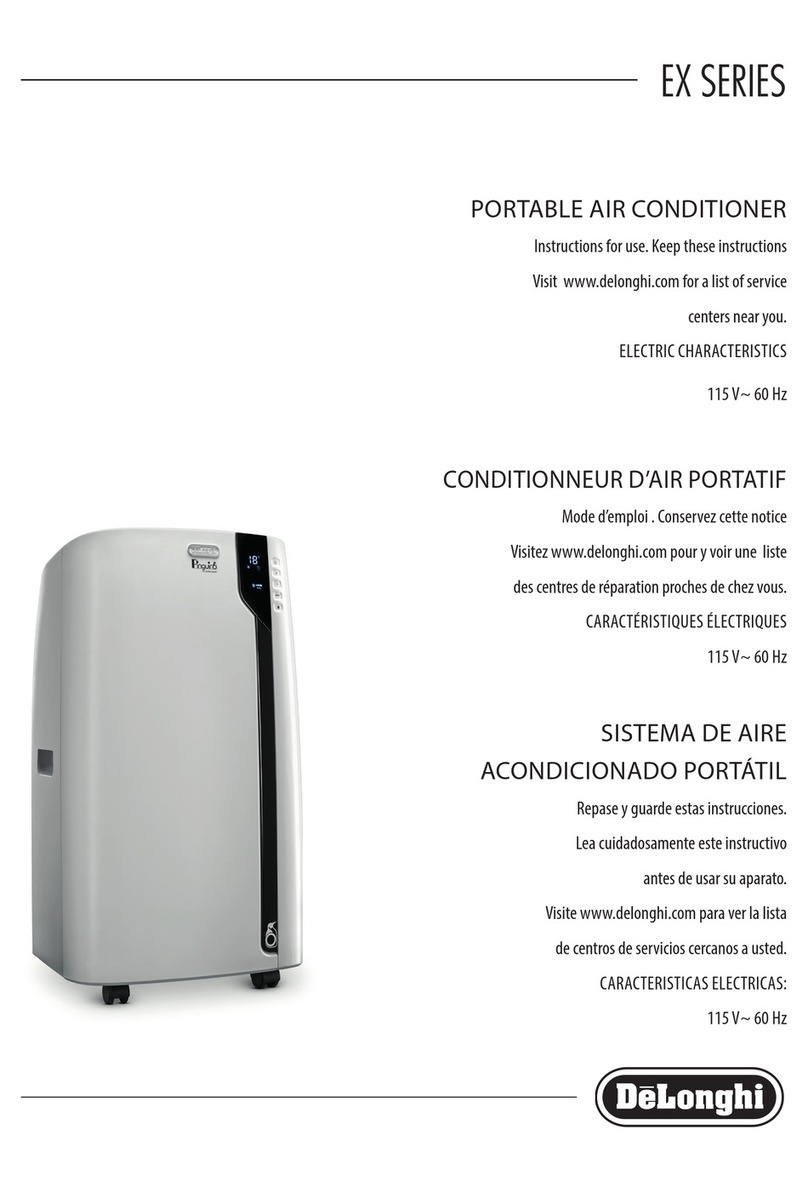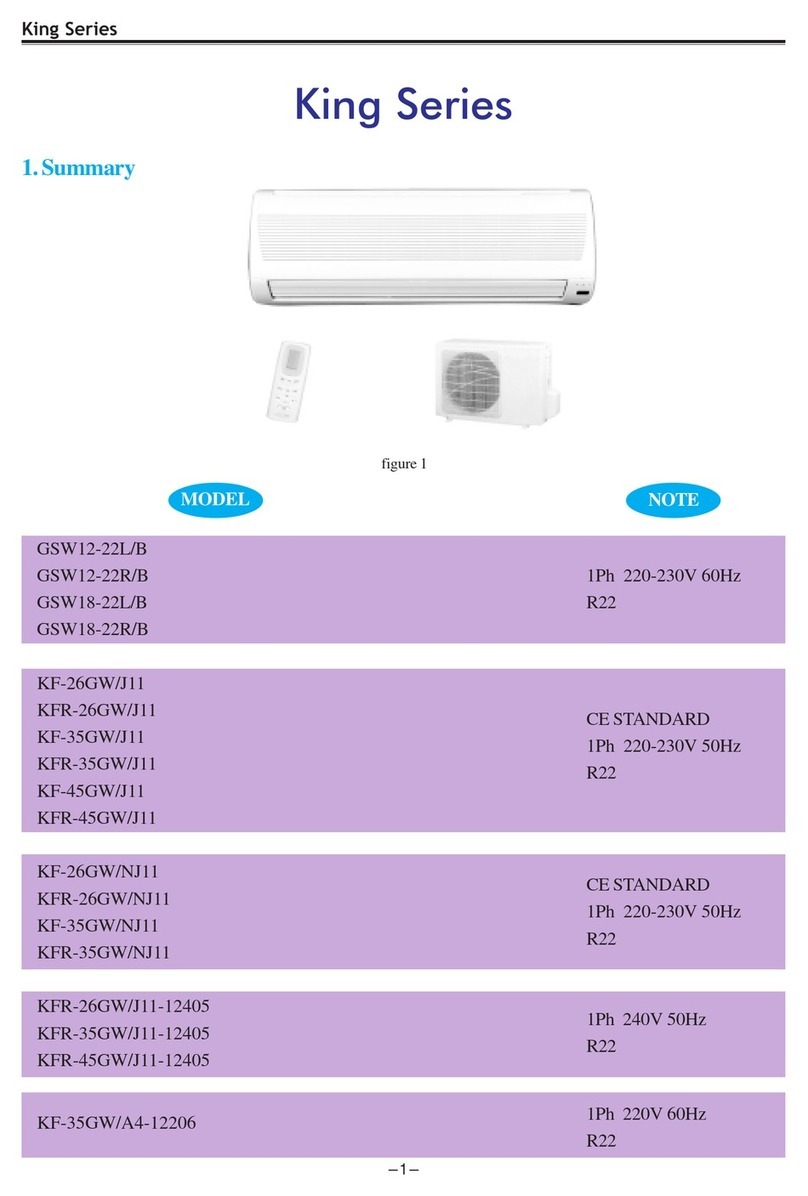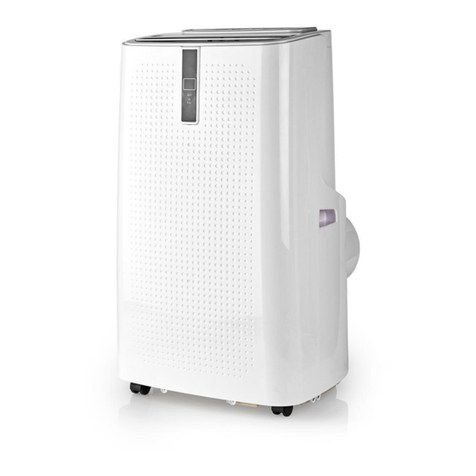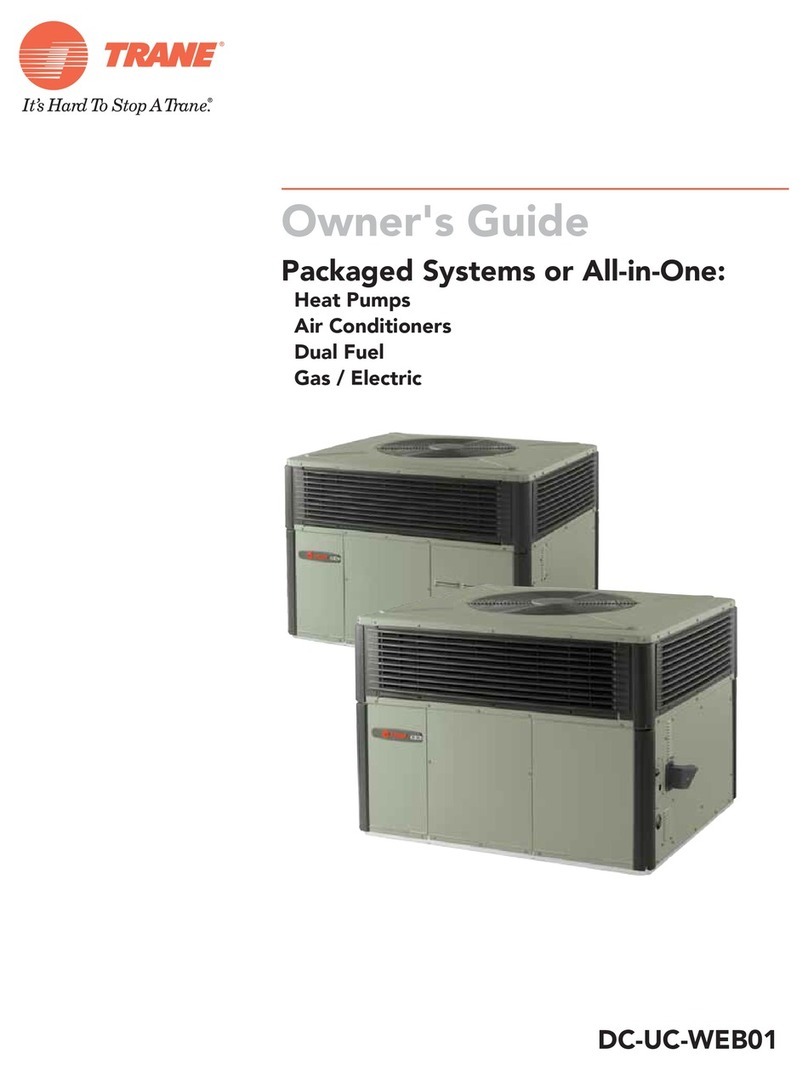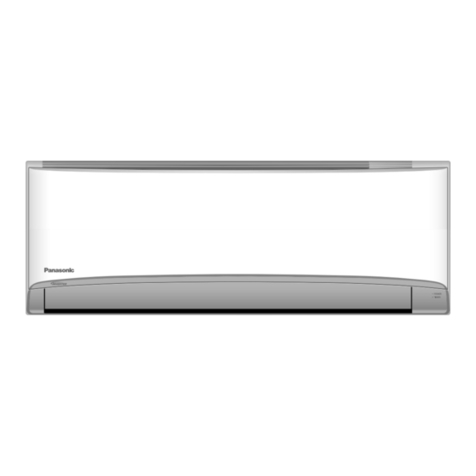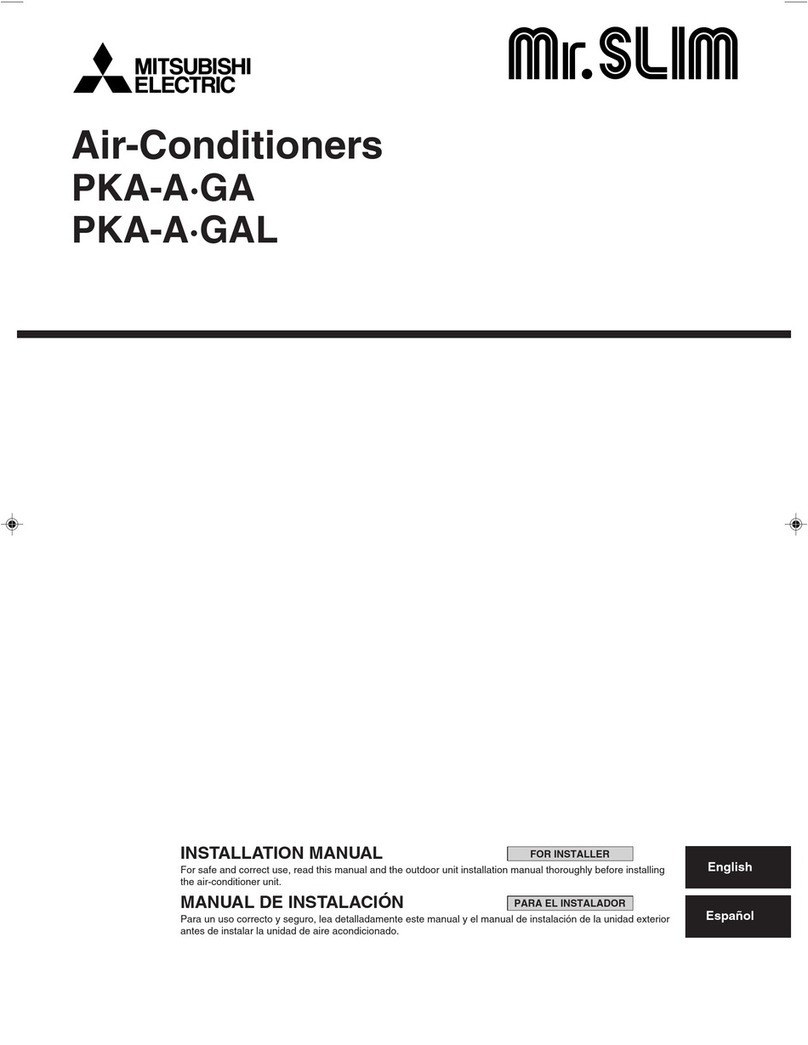Glowworm Envirosorb3 User manual

The energy you need
Installation instruc-
tions
Envirosorb₃
GB

Contents
2Installation instructions Envirosorb₃0020154078_03
Contents
1 Safety .................................................................... 3
1.1 Action-related warnings ......................................... 3
1.2 Required personnel qualifications ......................... 3
1.3 General safety information .................................... 3
1.4 Regulations (directives, laws, standards).............. 4
1.5 CE label ................................................................. 4
1.6 Approvals............................................................... 4
1.7 Local regulations.................................................... 5
1.8 Regulations............................................................ 5
1.9 Other regulations ................................................... 5
1.10 Intended use.......................................................... 5
2 Notes on the documentation .............................. 7
2.1 Observing other applicable documents ................. 7
2.2 Storing documents................................................. 7
2.3 Applicability of the instructions .............................. 7
3 System overview.................................................. 7
3.1 Safety devices ....................................................... 7
3.2 Functionality........................................................... 7
3.3 Permitted hydraulic configurations ........................ 8
3.4 System diagram (Envirosorb35)............................ 8
3.5 System diagram (Envirosorb38, Envirosorb311,
Envirosorb315) ...................................................... 9
4 Overview of the equipment................................. 9
4.1 Type designation and serial number ..................... 9
4.2 Information on the identification plate.................... 9
5 Assembly and installation ................................ 10
5.1 Preparing for fitting and installation ..................... 10
5.2 Carrying out the installation................................. 14
5.3 Hydraulics installation.......................................... 15
5.4 Carrying out the electrical installation.................. 17
5.5 Connection diagrams........................................... 19
6 Start-up ............................................................... 21
6.1 Run the start-up................................................... 21
6.2 Filling the heating circuit ...................................... 21
6.3 Treating the heating water................................... 21
6.4 Filling the heating installation .............................. 22
6.5 Activating the heat pump..................................... 22
6.6 Checking the product's operation ........................ 22
6.7 Operating noises.................................................. 23
6.8 Adjusting the heating circuit................................. 23
6.9 Installing the side cladding .................................. 24
6.10 Instructing the operator........................................ 24
7 Maintenance ....................................................... 24
7.1 Observing maintenance intervals ........................ 24
7.2 Preparing for maintenance .................................. 24
7.3 Instructions before carrying out maintenance
work ..................................................................... 25
7.4 Yearly maintenance............................................. 25
7.5 Cleaning the product............................................ 25
7.6 Draining the product ............................................ 26
7.7 Checking the product's status codes................... 26
7.8 Checking the electrical installation ...................... 26
7.9 Start-up following maintenance ........................... 26
8 Troubleshooting ................................................ 26
8.1 Troubleshooting................................................... 26
8.2 Fault codes .......................................................... 26
9 Decommissioning.............................................. 27
9.1 Temporary decommissioning .............................. 27
9.2 Permanently decommissioning............................ 27
10 Customer service............................................... 27
11 Disposal.............................................................. 27
11.1 Recycling and disposal........................................ 27
11.2 Arranging disposal of coolant .............................. 27
Appendix ............................................................................ 28
A Heat pump schematic........................................ 28
A.1 Heat pump schematic drawing (Envirosorb3
5).......................................................................... 28
A.2 Heat pump schematic drawing (Envirosorb3
8).......................................................................... 29
A.3 Heat pump schematic drawing (Envirosorb3
11)........................................................................ 30
A.4 Heat pump schematic drawing (Envirosorb3
15)........................................................................ 31
B Heat pump setting parameters......................... 31
C Technical data.................................................... 32
D Status codes ...................................................... 34
E Overview of fault codes .................................... 36
Index ................................................................................... 39

Safety 1
0020154078_03 Envirosorb₃Installation instructions 3
1 Safety
1.1 Action-related warnings
Classification of action-related warnings
The action-related warnings are classified in
accordance with the severity of the possible
danger using the following warning signs and
signal words:
Warning symbols and signal words
Danger!
Imminent danger to life or risk of
severe personal injury
Danger!
Risk of death from electric shock
Warning.
Risk of minor personal injury
Caution.
Risk of material or environmental
damage
1.2 Required personnel qualifications
Improper work carried out on the product
may cause material damage to the complete
installation and, as a consequence, may even
cause personal injury.
▶You should therefore only work on the
product if you are an authorised competent
person.
1.3 General safety information
1.3.1 Danger caused by improper
operation
Improper operation may present a danger to
you and others, and cause material damage.
▶Carefully read the enclosed instructions
and all other applicable documents, par-
ticularly the "Safety" section and the warn-
ings.
1.3.2 Risk of death from electric shock
There is a risk of death from electric shock if
you touch live components.
Before commencing work on the product:
▶Disconnect the product from the power
supply (electrical partition with a contact
opening of at least 3 mm, e.g. fuse or
power switch).
▶Secure against being switched back on
again.
▶Wait for at least 3 minutes until the con-
densers have discharged.
▶Check that there is no voltage.
▶Cover or insulate adjacent live parts.
1.3.3 Risk of death due to lack of safety
devices
A lack of safety devices (e.g. expansion re-
lief valve, expansion vessel) may lead to po-
tentially fatal scalding and other injuries, e.g.
due to explosions. The schematic drawings
included in this document do not show all
safety devices required for correct installa-
tion.
▶Install the necessary safety devices in the
system.
▶Inform the operator about the function and
position of the safety devices.
▶Observe the applicable national and inter-
national laws, standards and guidelines.
1.3.4 Risk of being scalded by hot
drinking water
There is a risk of scalding at the hot water
draw-off points if the hot water temperatures
are greater than 50 °C. Young children and
elderly persons are particularly at risk, even
at lower temperatures.
▶Select the temperature so that nobody is at
risk.
1.3.5 Risk of injury or material damage
due to incorrect handling of the
product
Using the fins on the front side of the product
as conductors may lead to injuries (due to
falling) or to material damage.
▶Do not use the fins as conductors.
1.3.6 Risk of material damage due to
additional elements in the heating
water
Unsuitable frost and corrosion protection
agents may damage seals and other com-
ponents of the heating circuit and may there-
fore also lead to leaks in the water outlet.
▶Only add approved frost and corrosion
protection agents to the heating water.

1 Safety
4Installation instructions Envirosorb₃0020154078_03
1.3.7 Risk of material damage caused by
using an unsuitable tool
▶Use the correct tool to tighten or loosen
screw connections.
1.3.8 Avoid environmental damage
caused by escaping coolant
The heat pump contains R410A coolant.
The coolant must not be allowed to escape
into the atmosphere. R410A is a fluorinated
greenhouse gas covered by the Kyoto Pro-
tocol, with a GWP of 1725 (GWP = Global
Warming Potential). If it escapes into the at-
mosphere, its impact is 1725 times stronger
than the natural greenhouse gas CO2.
Before the heat pump is disposed of, the
coolant it contains must be completely
drained into a suitable vessel so that it
can then be recycled or disposed of in
accordance with the regulations.
▶Ensure that only officially certified com-
petent persons with appropriate protective
equipment carry out maintenance work on
the coolant circuit or access it.
▶Arrange for the coolant contained in the
product to be recycled or disposed of by
accredited specialists in accordance with
regulations.
▶Only use coolant R410A.
▶Only use a suitable R410A tool for the
filling, pressure measurement, vacuum
generation and discharge.
▶Solder the lines using shielding gas. Check
the lines for leak-tightness using nitrogen.
▶In the event of a repair or maintenance
work, fill the coolant circuit with liquid
coolant.
▶If the coolant circuit is not leak-tight, check
which component must be repaired or re-
placed.
▶Lower the negative pressure in the coolant
circuit to max. 10 mbar (1000 Pa).
▶When filling the coolant circuit, observe the
values in the "Technical data" section.
1.4 Regulations (directives, laws,
standards)
As part of the installation, commissioning and
operation of the heat pump and the DHW
storage you must take into account the cur-
rent versions of the following regulations or
standards, along with any local directives or
guidelines that may apply.
–Electricity at work act.
–Health and safety at work act.
–Relevant Utility supplier’s regulations.
–Water regulations and by-laws.
–Environment agency and local council re-
quirements regarding bore holes, water
courses, or noise levels.
–Gas safety installation and use regulations
concerning any associated gas fired heat
source used within the heating system.
–Building regulations part “L” and directives
concerning energy saving.
–Building regulations such as G3 covering
Hygiene and L8 Legieonella.
–COSHH regulations.
–Other relevant bodies such as HETAS and
OFTEC.
–BS7671 requirements for electrical installa-
tions.
1.5 CE label
The CE label shows that the products comply
with the basic requirements of the applicable
directives as stated on the identification plate.
The declaration of conformity can be viewed
at the manufacturer's site.
1.6 Approvals
This product has been fully tested in accord-
ance with:
–BS EN 14511:2011

Safety 1
0020154078_03 Envirosorb₃Installation instructions 5
1.7 Local regulations
Benchmark places responsibilities on both
manufacturers and installers. The purpose is
to ensure that customers are provided with
the correct equipment for their needs, that it
is installed, commissioned and serviced in
accordance with the manufacturer’s instruc-
tions by a competent person approved at the
time by the Health and Safety Executive and
that it meets the requirements of the appro-
priate Building Regulations. The Benchmark
Checklist can be used to demonstrate compli-
ance with Building Regulations and should be
provided to the customer for future reference.
Installers are required to carry out installation,
commissioning and servicing work in accord-
ance with the Benchmark Code of Practice
which is available from the Heating and Hot-
water Industry Council who manage and pro-
mote the Scheme.
Visit www.centralheating.co.uk for more in-
formation.
Planning consent and Building works notific-
ation should be submitted either to Building
Control or to a Competent Person Provider.
1.8 Regulations
1.8.1 Statutory requirements
Where no British Standards exists, materials
and equipment should be fi t for their purpose
and of suitable quality and workmanship.
The installation of this appliance must be car-
ried out by a competent person in accord-
ance the rules in force in the countries of des-
tination.
Manufacturer’s instructions must not be taken
as overriding statutory requirements.
1.8.2 Standards
On installing and commissioning the appli-
ance you must adhere to the technical rules,
standards and provisions in eff ect at the
time.
1.8.3 Reminder of existing regulatory acts
–EC regulation No. 20372000 from the 29th
of June 2000 This European regulation re-
peals regulation No. 3093/94 and presents
the elimination schedules of CFC and
HCFC. It also deals with the collection of
refrigerants, system leaks, particularly sys-
tems containing more than 3 kg of CFC
or HCFC, as well as the minimum level of
qualifi cation required by the technicians.
–EC regulation No. 0842/2006 from the 17th
of May 2006 regarding the containment,
use, collection and disposal of the fl uorin-
ated greenhouse gases, the labelling and
elimination of the products and equipment
containing these gases, the restriction of
use and banning of certain products from
the market, as well as the training and cer-
tifi cation of personnel and companies op-
erating in the activities targeted by this reg-
ulation: refrigeration, air-conditioning, heat
pumps and fi re protection systems con-
taining greenhouse gases.
1.9 Other regulations
1.9.1 Control of Substances Hazardous to
Health
Under Section 6 of The Health and Safety at
Work Act 1974, we are required to provide in-
formation on substances hazardous to health.
The adhesives and sealants used in this ap-
pliance are cured and give no known hazard
in this state.
The refrigerant used in this appliance is
R410a the use of which is strictly controlled
by F Gas regulation EN842/2006.
1.10 Intended use
There is a risk of injury or death to the user or
others, or of damage to the product and other
property in the event of improper use or use
for which it is not intended.
The heat pump is an air/water monoblock
system and uses the energy from the outside
air to supply heat to the building.
The heat pumps are intended exclusively for
domestic use as heat generators for closed

1 Safety
6Installation instructions Envirosorb₃0020154078_03
heating and hot water central heating sys-
tems and for hot water generation.
Intended use includes the following:
–observance of accompanying operating,
installation and servicing instructions for
the product and any other system compon-
ents
–installing and fitting the product in accord-
ance with the product and system approval
–compliance with all inspection and main-
tenance conditions listed in the instruc-
tions.
Any other use that is not specified in these
instructions, or use beyond that specified in
this document, shall be considered improper
use. Any direct commercial or industrial use
is also deemed to be improper.
Caution.
Improper use of any kind is prohibited.

Notes on the documentation 2
0020154078_03 Envirosorb₃Installation instructions 7
2 Notes on the documentation
2.1 Observing other applicable documents
▶You must observe all the operating and installation in-
structions included with the system components.
2.2 Storing documents
▶Pass these instructions and all other applicable docu-
ments on to the system operator.
2.3 Applicability of the instructions
These instructions apply to units with the following type des-
ignations and article numbers only:
Type designation Art. no.
Envirosorb35 0010014421
Envirosorb38 0010011967
Envirosorb311 0010011968
Envirosorb315 0010014422
The seventh to sixteenth digits of the serial number on the
identification plate form the article number.
3 System overview
3.1 Safety devices
–The product can work at the following outside temperat-
ures:
Envirosorb3
5
Envirosorb3
8,
Envirosorb3
11,
Envirosorb3
15
Heating mode −15 … 28 ℃ −20 … 28 ℃
Cylinder charging mode −15 … 46 ℃ −20 … 46 ℃
–If the product's coolant circuit pressure exceeds the max-
imum pressure of 4.15 MPa (41.5 bar), the high-pres-
sure pressure switch switches the product off. Follow-
ing a waiting period, the product attempts to start once
more. After three failed start attempts in succession, a
fault message is displayed.
–If the product is switched off, the crankcase housing
heating is switched on when the compressor outlet tem-
perature reaches 7 °C in order to prevent possible dam-
age caused by switching it back on.
–If the compressor inlet temperature and the compressor
outlet temperature are below 1 °C, the compressor does
not start up.
–A temperature sensor on the compressor outlet limits the
product's operation if the measured temperature exceeds
the maximum permissible temperature. The maximum
permissible temperature depends on the evaporation and
condensation temperature.
–The product measures the flow rate of the connected
heating circuit when starting up the product.
–If the heating circuit temperature falls below 3 °C, the
product's frost protection function is automatically ac-
tivated as the heating pump is started. In addition, frost
protection agent should be added to the heating water as
the heating water temperature may fall below the freez-
ing point in the event of a power cut, which poses a risk
of frost to the heating installation.
Note
Operating the heat pump outside the application
limits results in the heat pump being switched off
by the internal control and safety devices.
3.2 Functionality
The product comprises the following circuits:
–The coolant circuit releases heat into the heating circuit
by means of evaporation, compression, condensation
and expansion
–The heating circuit
3.2.1 Heating mode
1
2
34
56
1 Evaporator
2 4-way valve
3 Fan
4 Compressor
5 Electronic expansion valve
6 Plate heat exchanger
3.2.2 Thawing
1
2
34
56
1 Evaporator
2 4-way valve
3 Fan
4 Compressor
5 Electronic expansion valve
6 Plate heat exchanger
3.2.3 Application limits
Operation of the pump outside the application limits results in
the heat pump being switched off by the internal control and
safety devices.

3 System overview
8Installation instructions Envirosorb₃0020154078_03
3.2.3.1 Application limits in heating mode
(Envirosorb35)
60
50
70
40
30
20
10
0-20 -10 0 10 20 30 40 50
[-15;22]
[-15;45]
[46;22]
[46;58]
[35;60]
[28;60]
[2;60]
[-10;55]
12
[28;22] [35;22]
A
B
1 Heating mode application
limits
2 Hot water generation
application limits
A Water temperature
B Air temperature
3.2.3.2 Application limits in heating mode
(Envirosorb38, Envirosorb311, Envirosorb3
15)
60
50
70
40
30
20
10
0-20 -10 0 10 20 30 40 50
[-20;22]
[-20;43]
[46;22]
[46;58]
[35;63]
[28;63]
[2;63]
[-10;55]
12
[28;22] [35;22]
A
B
1 Heating mode application
limits
2 Hot water generation
application limits
A Water temperature
B Air temperature
3.3 Permitted hydraulic configurations
3.3.1 Direct connection to a heating installation
3.3.2 Indirect connection to a heating installation
via a hydraulic module
3.4 System diagram (Envirosorb35)
e
1 3 12161719
24
1521
14
11
4
23
20
2
22
5 13 8 9
6
7
10
A
B
18
1 Fan
2 Air inlet temperature
sensor
3 Ribbed pipe heat ex-
changer
4 Temperature sensor of
the ribbed pipe heat ex-
changer
5 4-way valve
6 Return heating circuit
temperature sensor
7 High-efficiency pump with
flow rate sensor
8 Purging valve
9 Flow heating circuit tem-
perature sensor
10 Drain valve
11 Plate heat exchanger
12 Temperature sensor after
the plate heat exchanger
13 Service valve for the high-
pressure range of the
coolant circuit
14 High-pressure pressure
switch in the coolant cir-
cuit
15 High-pressure sensor in
the coolant circuit
16 Compressor outlet temper-
ature sensor
17 Rotary piston compressor
18 Filter
19 Liquid separator
20 Electronic expansion valve
21 Compressor inlet temper-
ature sensor
22 Service valve for the low-
pressure range of the
coolant circuit
23 Filter
24 Fluid collector
A Heating return
B Heating flow

Overview of the equipment 4
0020154078_03 Envirosorb₃Installation instructions 9
3.5 System diagram (Envirosorb38,
Envirosorb311, Envirosorb315)
e
1 3 12161719
25
23
1521
14
11
4
24
20
2
22
5 13 8 9
6
7
10
A
B
18
1 Fan
2 Air inlet temperature
sensor
3 Ribbed pipe heat ex-
changer
4 Temperature sensor of
the ribbed pipe heat ex-
changer
5 4-way valve
6 Return heating circuit
temperature sensor
7 High-efficiency pump with
flow sensor
8 Purging valve
9 Flow heating circuit tem-
perature sensor
10 Drain valve
11 Plate heat exchanger
12 Temperature sensor after
the plate heat exchanger
13 Service valve for the high-
pressure range of the
coolant circuit
14 High-pressure pressure
switch in the coolant cir-
cuit
15 High-pressure sensor in
the coolant circuit
16 Compressor outlet temper-
ature sensor
17 Rotary piston compressor
18 Filter
19 Liquid separator
20 Electronic expansion valve
21 Compressor inlet temper-
ature sensor
22 Service valve for the low-
pressure range of the
coolant circuit
23 Flow rate limiter (cooling
mode) on Genia Air 8/1
only
24 Filter
25 Gas buffer
A Heating return
B Heating flow
4 Overview of the equipment
4.1 Type designation and serial number
1
1
The type designation and serial number are on the identifica-
tion plate (1).
4.2 Information on the identification plate
Information on the identi-
fication plate Meaning
Serial no. Unique unit identification number
P max Maximum rated power
I Max. operating current
I max Maximum start-up current
R410A Coolant type and fill quantity
PSR_LP
PSR_HP
Min. and max. operating pres-
sure in the coolant circuit
PSHmin
PSHmax
Minimum and maximum operat-
ing pressure in the heating circuit
COP (Ax/Wxx) Output figure (coefficient of
performance) at an air inlet
temperature of xx °C and a
heating flow temperature of
xx °C
(Ax/Wxx) Heating output at an air inlet
temperature of xx °C and a
heating flow temperature of
xx °C
Volt Compressor, pump and control-
ler mains voltage
Hz Power frequency
IP Protection class

5 Assembly and installation
10 Installation instructions Envirosorb₃0020154078_03
5 Assembly and installation
5.1 Preparing for fitting and installation
5.1.1 Delivery, transport and positioning
5.1.1.1 Transporting the product
Warning.
Risk of injury from lifting a heavy weight.
Lifting weights that are too heavy may cause
injury to the spine, for example.
▶When transporting the product, two
people should lift it.
▶Observe the product weight stated in the
technical data.
▶When transporting heavy loads, observe
the applicable directives and regulations.
Caution.
Risk of material damage due to incorrect
transportation.
Regardless of the mode of transport, the heat
pump must never be tilted by more than 45°.
Otherwise, this may lead to malfunctions in
the coolant circuit during subsequent opera-
tion. In the worst case scenario, this may lead
to a fault in the whole system.
▶During transport, do not tilt the heat pump
by any more than the maximum angle of
45°.
1. Use the transportation belt to carry the product to the
final installation site.
2. Only lift the product from the back and side where the
hydraulic connections are located.
3. When transporting the product using a hand truck, se-
cure the product using a belt.
4. In order to avoid scratches and damage, protect the
sides of the product that come into contact with the
hand truck.
5.1.1.2 Unpacking the product
13mm
12
3
4
B
A
D
E
C
1. Remove the accessory (2).
2. Remove the documentation supplied (1).
3. Remove the transport belt (4).
4. Carefully remove the packaging and padding without
damaging the product (3).
5. Remove the screws from the pallet at the front and rear
of the product.

Assembly and installation 5
0020154078_03 Envirosorb₃Installation instructions 11
5.1.1.3 Checking the scope of delivery
▶Check the contents of the packaging units
Quant-
ity
Description
1 Condensate discharge
1 Bag with seals
4 Vibration-isolating feet
1 Purge hose
5.1.2 Complying with clearances and installation
clearances
5.1.2.1 Unit dimensions and connection
dimensions
120
120 740
980
360
800*
386
11
Envirosorb 5
3
* Size increases by 45 mm
when using the vibration
dampers supplied.
162
162 778
1103
415
942*
437
11
Envirosorb 8
3
Envirosorb 11
3
* Size increases by 45 mm
when using the vibration
dampers supplied.

5 Assembly and installation
12 Installation instructions Envirosorb₃0020154078_03
162
162 778
1103
415
1340*
437
11
Envirosorb 15
3
* Size increases by 45 mm
when using the vibration
dampers supplied.
5.1.2.2 Installation clearance
C
B
D
A
A
E
Clearance For heating mode
A > 250 mm
B > 1000 mm
C > 120 mm*
D > 600 mm
E > 300 mm
*Caution: If the minimum clearances are not maintained, the
output of the product may be affected.
▶To guarantee sufficient air flow and to facilitate mainten-
ance work, observe the minimum clearances that are
specified above.
▶Ensure that there is sufficient room to install the hydraulic
lines.
▶If the product is to be installed in areas where heavy
snow falls, ensure that the snow does not accumulate
around the product and that the minimum clearances
specified above are observed. If you cannot ensure this,
install an additional heat generator in the heating circuit.

Assembly and installation 5
0020154078_03 Envirosorb₃Installation instructions 13
5.1.2.3 Selecting the installation site
▶Observe all valid regulations.
▶Install the product outside the building.
▶Do not install the product:
–Near a heat source,
–Near flammable materials,
–Near ventilation openings for adjacent buildings,
–Under deciduous trees.
▶Note the following points when installing the product:
–Prevailing winds,
–The visual impression on the environment
▶Avoid places where strong winds blow on the product's
air outlet.
▶Point the fan away from nearby windows. Install noise
protection if necessary.
▶Install the product on one of the following supports:
–Concrete slab,
–Steel T-beam,
–Concrete block,
–Elevating socket (accessory),
–Wall bracket (permitted accessory for Envirosorb35,
Envirosorb38 and Envirosorb311).
▶Do not expose the product to dusty or corrosive air (e.g.
near unsecured streets).
▶Do not install the product near ventilation shafts.
▶Prepare the routing for the electrical lines.
dB(A)
dB(A)
▶Note any noise emissions from the fan and compressor.

5 Assembly and installation
14 Installation instructions Envirosorb₃0020154078_03
5.1.2.4 Installing the heat pump
1. Note the safety information in this manual and in the
operating instructions before installing the product.
2. Install the product on steel beams, concrete blocks or
using a wall holder (accessory).
3. Ensure that no water collects under the product.
4. In order to avoid ice formation, ensure that the ground
in front of the product can absorb water well.
5.1.2.5 Preparing the condensate discharge
>100mm
Danger!
Risk of injury due to frozen condensate.
Frozen condensate on paths may cause falls.
▶Ensure that condensate does not dis-
charge onto paths and that ice cannot
build up there.
The condensate is discharged centrally underneath the
product.
▶Prepare the condensate discharge using a drain line or in
a gravel bed.
5.2 Carrying out the installation
5.2.1 Removing the side casing
BA
A
C
1. Remove both screws (A).
2. Pull the side casing downwards and then forwards.
Note
Note that the required tool is not included in
the scope of delivery.
5.2.2 Aligning the product
1. Only use bolts of a specific length.

Assembly and installation 5
0020154078_03 Envirosorb₃Installation instructions 15
–Maximum length: ≤8 mm
2. Align the product horizontally so that condensate can
flow.
Note
The product must be installed with the vi-
bration-isolating feet supplied. The product
is lifted by the vibration-isolating feet, which
simplifies the condensate-discharge process
and reduces vibrations.
3. Screw in the vibration-damping feet using the concrete
foundation.
Note
The concrete foundation must not be joined
to the house foundations.
5.3 Hydraulics installation
In heating installations that are equipped primarily with ther-
mostatic or electrically controlled valves, a constant and suf-
ficient flow through the heat pump must be ensured. Irre-
spective of which heating installation is selected, the min-
imum volume of circulating heating water (40% of the nom-
inal flow, see the technical data table) must be guaranteed.
5.3.1 Carrying out the hydraulics installation
Caution.
Risk of damage caused by residue in the
heating flow and return.
Residue from the pipelines, such as welding
beads, scale, hemp, putty, rust and coarse
dirt, may be deposited in the product and
cause malfunctions.
▶Flush the heating installation thoroughly
before connecting the product in order to
remove any possible residue.
Caution.
Risk of material damage due to corrosion.
If plastic pipes that are not diffusion-tight are
used in the heating circuit, this may lead to
corrosion and deposits in the heating circuit
and in the product.
▶Do not treat the water with corrosion pro-
tection agents if plastic pipes that are not
diffusion-tight are used.
Danger!
Risk of material damage caused by sol-
dering work.
Carrying out soldering work on lines that
have already been installed may damage the
seals.
▶Solder the lines before installing the
product.
1. Insulate the lines (including those running below
ground) with UV-resistant and high-temperature-res-
istant insulation between the product and the heating
installation.
2. In order to avoid transferring vibrations to the surround-
ing buildings, use flexible connection pipes on the
product that have a length of at least 0.75 m.
3. When the product is not installed at the highest point in
the heating circuit, install additional purging valves in
suitable places.
4. Install the following accessories in the heating return.
Installation without decoupling hydraulic module
–Drain cock
–Air separator (if required)
–Dirt filter
–An expansion vessel suitable for the complete hydraulic
installation
–Expansion relief valve 0.3 MPa (3 bar)
–Pressure gauge (recommended)
Maximum length of the
heating circuit
DN 26 DN 28
When using a hydraulic
module without an expansion
vessel
50 m 30 m
Note
If you use glycol, you must collect it at the
expansion relief valve to prevent environ-
mental pollution.
0.75 m min.
1
4
5
6
7
3
2
1 Connection hose in the
heating flow to the building
(on-site)
2 O-ring seal
3 Covering cap
4 Heating flow connection
(diameter 1 1/4") to the
building
5 Heating return connection
(diameter 1 1/4") to the
heat pump
6 Connection hose in the
heating return to the heat
pump (on-site)
7 Insulation (on-site)
5. Remove the covering caps (3) from the product's hy-
draulic connections.
6. Install a dirt filter in the heating circuit return between
two stop valves so that the filter can be cleaned regu-
larly.

5 Assembly and installation
16 Installation instructions Envirosorb₃0020154078_03
7. Install a flexible connection pipe (1) and (6) (to be
provided on-site) with an O-ring and a stop valve to
each of the connections for the heat pump heating flow
and return.
8. Check the connections for tightness.
5.3.2 Connecting the swimming pool (optional)
Danger!
Risk of material damage due to a direct
connection to a swimming pool.
If the product is directly connected to a swim-
ming pool, damage may be caused by corro-
sion.
▶Do not connect the heat pump heating
circuit directly to a swimming pool.
▶If you want to connect a swimming pool to the heating
circuit, note the components (expansion vessels, etc.)
that are required for the installation.
5.3.3 Connecting the condensate drain pipework
Note
Observe all valid national regulations and rules.
B
A
365
Ø25
1
2
3
4
5
1 Condensate drain pipe
2 Adaptor
3 Cable tie
4 Elbow
5 Seal
1. Observe the various installation dimensions for the
products.
Product Dimension Value
–Envirosorb35 A 70.0 mm
B 490.0 mm
–Envirosorb38
–Envirosorb311
–Envirosorb315
A 102.5 mm
B 550.0 mm
2. Pull the heating wire in the condensate pan until the
elbow (4).
3. Connect the elbow (4) and adaptor (2) to the seal (5)
and secure them both using a cable tie (3).
4. Connect a condensate drain pipe to the elbow.
5. Install the heating wire in the condensate drain pipe (1)
in order to prevent the condensate from freezing in the
line.
6. Connect the adaptor (2) with the product's floor plate
and secure it with a 1/4 rotation.

Assembly and installation 5
0020154078_03 Envirosorb₃Installation instructions 17
7. Make sure that the condensate drain pipe ends in a
gravel bed.
Note
The condensate drain pipe must not be
longer than 365 mm, otherwise it may freeze
over.
8. Route the condensate drain pipework with a downward
gradient.
5.4 Carrying out the electrical installation
30 mm max.
12
1 Connecting wires 2 Insulation
Danger!
Risk of death from electric shock as a res-
ult of an improper electrical connection!
An improper electrical connection may neg-
atively affect the operational safety of the
product and result in material damage or per-
sonal injury.
▶The electrical installation must be carried
out by a suitably qualified competent per-
son who is responsible for complying with
the existing standards and directives.
1. Only strip a maximum of 3 cm from the outer sheathing
of the flexible lines.
2. Secure the conductors in the connection terminals.
5.4.1 Establishing the power supply
The external mains connection cable must be earthed and
connected with the correct polarity and in accordance with
the valid regulations.
▶Check that the mains connection cable is connected cor-
rectly.
The cables that connect the product to the fuse box must:
–Be suitable for fixed installation,
–Be weatherproof,
–Be equipped with a wire cross-section that is necessary
for the product performance.
▶Connect the product using a fixed connection and a parti-
tion with a contact opening of at least 3 mm (e.g. fuses or
power switches).
In order to meet the overvoltage category II requirements,
further fuse protection may be required.
To meet the overvoltage category III conditions, the parti-
tions must ensure a complete separation of the power sup-
ply.
5.4.2 Standard tariff
5.4.2.1 230 V connection
X4
X9
EBUS
X7
FLOOR H
X2
21
2
1
1 Mains connection terminal
in the product
2 Partition
Caution.
Risk of material damage due to high con-
nected voltage.
At mains voltages greater than 253 V, elec-
tronic components may be damaged.
▶Ensure that the rated voltage of the mains
is 230 V.
▶Connect the mains connection cable to the product's
power supply connection.
En-
virosorb3
5
En-
virosorb3
8
En-
virosorb3
11
En-
virosorb3
15
Power supply 1/N/PE
230 V
50 Hz
1/N/PE
230 V
50 Hz
1/N/PE
230 V
50 Hz
1/N/PE
230 V
50 Hz
Fuse 16 A -
type C
or D
16 A -
type C
or D
20 A -
type C
or D
20 A -
type C
or D
Recommended
cable dimension
3G x
2.5 mm²
3G x
2.5 mm²
3G x
2.5 mm²
3G x
2.5 mm²
▶To ensure that people are safe, install a separate 30 mA
residual-current-operated circuit-breaker for the heat
pump.
▶Guide the mains connection cable through the product's
cable duct (PEG screwed connection).

5 Assembly and installation
18 Installation instructions Envirosorb₃0020154078_03
5.4.3 Laying the 24 V cabling
X4
X9
EBUS
X7
FLOOR H
3
1
2
1 eBUS connection in the
heat pump (observe the
polarity)
2 Limit thermostat connec-
tion (underfloor protective
circuit)
3 eBUS connection in the
heat pump control module
1. Feed the cable through the cable duct.
Envirosorb35
Envirosorb38
Envirosorb311
Envirosorb315
Recommended eBUS cable dimen-
sion
2 x 0.75 mm²
Recommended cable dimension for
eBUS + limit thermostat
4 x 0.75 mm²
2. Connect the eBUS cable to the system controller.
3. If you install a limit thermostat (e.g. 50 °C) in the heat-
ing circuit flow, remove the bridge from terminal (2) and
connect the limit thermostat to this terminal.
5.4.4 Installing the cable duct
Caution.
Risk of malfunction due to incorrect rout-
ing of the supply lines.
If you route the supply lines for the power
supply and the eBUS line through the same
cable duct, the signal will be disrupted.
▶Route the supply lines for the power sup-
ply and the eBUS line through various
cable ducts in the product.
123456789101112131415
16
1
2
3
4
ØA
ØA
1
2
1 eBUS line and limit ther-
mostat line cable duct
2 Power supply cable duct
1. Measure the diameter of the cable.
2. Drill a hole the same size as the cable diameter in the
cable duct.
3. Route the cable through the cable duct.
4. Tighten the cable duct with two open-end spanners.

Assembly and installation 5
0020154078_03 Envirosorb₃Installation instructions 19
5.5 Connection diagrams
5.5.1 Connection diagram
X8
X1
X6
X4
X7
X60DA
X14
X700
X16
X11
F1
X1
X15
X13
X26
X23
X21
X22
X30 X25
X24
X25
X5
X10CA
X9
X2
RL1
X3
15
16
17
12
18
19
20
21
22
23
24
25
11
9
8
7
6
5431
2
13
14
10
1 Temperature sensor of the ribbed pipe heat exchanger
2 Temperature sensor after the plate heat exchanger
3 Coolant circuit pressure switch
4 Compressor inlet temperature sensor
5 Compressor outlet temperature sensor
6 Coolant circuit temperature sensor
7 Heat pump heating flow temperature sensor
8 Heat pump heating return temperature sensor
9 Air inlet temperature sensor
10 Electronic expansion valve

5 Assembly and installation
20 Installation instructions Envirosorb₃0020154078_03
11 Main PCB
12 Coding resistance
13 Diagnosis software connection
14 Fan 1
15 Fan 2 (with 15 kW only)
16 Fan PCB
17 Crankcase heating
18 Drain pan electrical heating rod
19 LED status display
20 Heating circuit high-efficiency pump with flow sensor
21 4-way valve
22 PCB installation
23 Rotary piston compressor
24 Inverter box
25 Temperature sensor for ribbed pipe heat exchanger
Table of contents
Popular Air Conditioner manuals by other brands

Carrier
Carrier Fan Coil 42B Installation, operation and maintenance manual

CLIMAVENETA
CLIMAVENETA a-CHD U-2T 606+2209 OPERATING AND INSTALLATION Manual
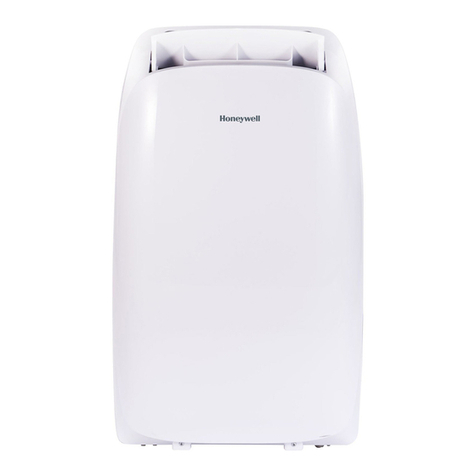
Honeywell
Honeywell HL10 Series user manual
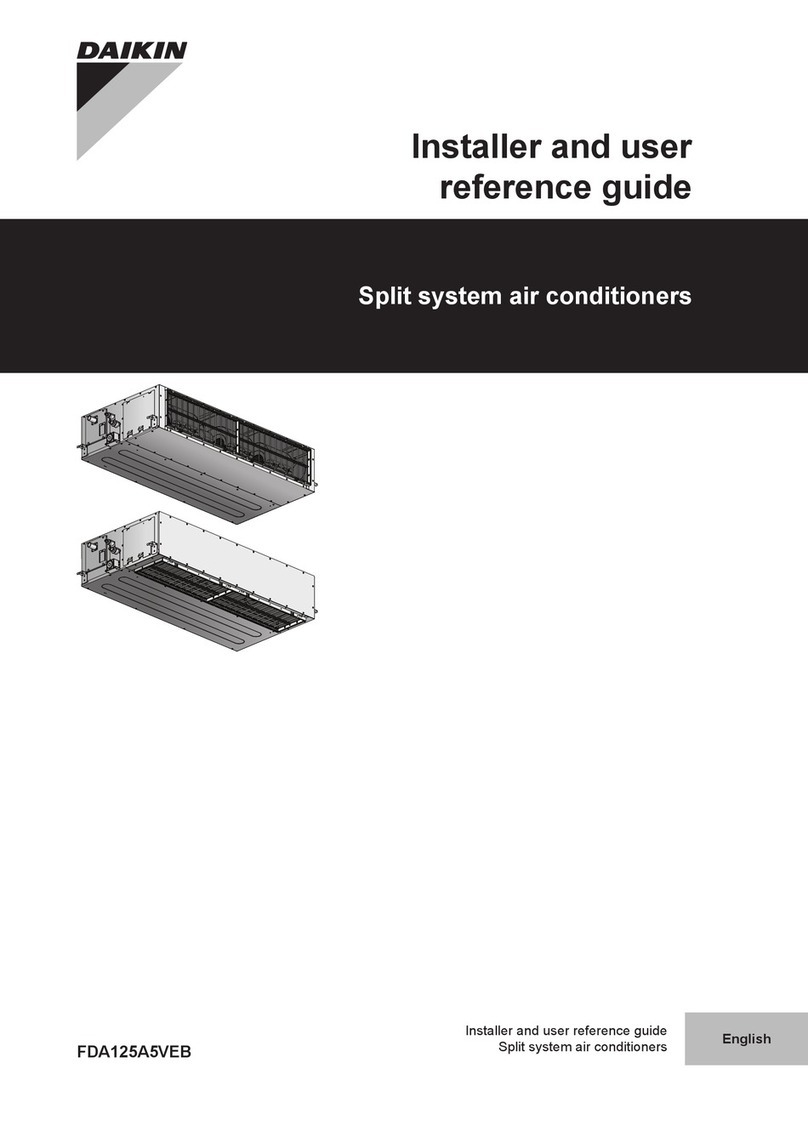
Daikin
Daikin FDA125A5VEB Installer and user reference guide

Sanyo
Sanyo SAP-CMRV1923GJH Technical & service manual
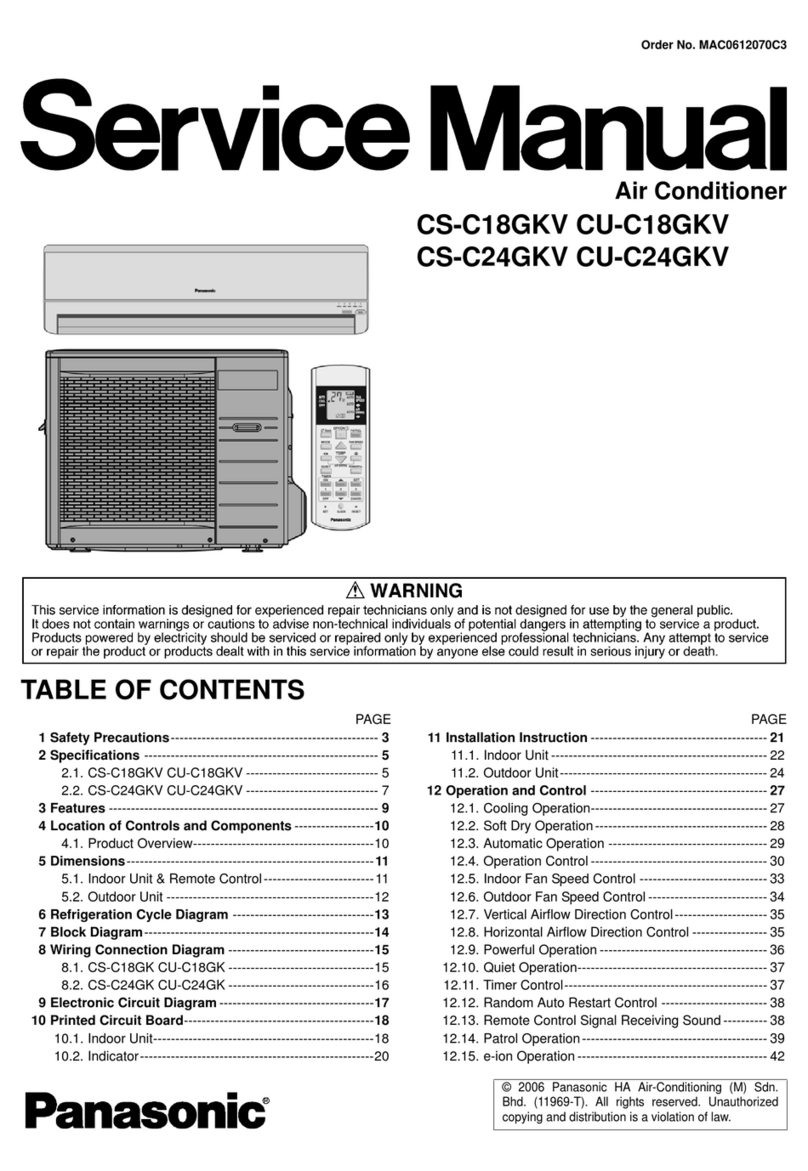
Panasonic
Panasonic CS-C18GKV Service manual
